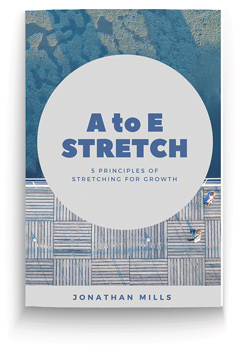“Nothing splendid has ever been achieved except by those who dared believe that something inside of them was superior to circumstance” (Bruce Barton)
Lewis Pugh has pioneered more swims around famous landmarks than any other person in history. He swam across the icy waters of the North Pole to highlight the melting of the Arctic sea ice and across a glacial lake on Mt Everest to draw attention to the impact of climate change on the Himalayan glaciers. It was there that he met his first Yak. Trekking behind them up the icy slopes, watching them cross dizzying ravines and listening to them breathe outside his tent each night, Lewis got thinking about the things he most admired in a Yak. He found that those qualities were not unlike the ones that enabled him to meet his own challenges – and achieve things that people believed to be impossible. These were not just feats of physical stamina and endurance, but about overcoming the psychological obstacles to success. Driven by nothing more than deep belief, he has achieved things most would regard as impossible. His life doesn’t tell us what we must do, but shows what can be done.
To achieve the impossible, we must first understand that the ‘state of impossible’ is simply a ‘state of mind.’ Nothing is truly impossible. Impossibility only exists when we lack the proper knowledge and experience to comprehend how something can be possible. “If we can find the patience to see the world for what it is – dynamic, flexible and loaded with untapped potential – and if we can accept the fact that change is an inevitable and brilliant part of life, then we can partake in the thrill of progression and help shape a world in which the impossible becomes possible” (Marc Chernoff).
Secondly, establish a “compelling purpose” for yourself – one that truly represents you. Roger Bannister broke the 4-minute mile in 1954. Before that, everyone thought it was impossible. Now, it’s the standard. Did it just happen? No, Roger suffered defeat after defeat, but in 1953, he ran a 4:06:6 mile and said, “This race made me realise that the four-minute mile was not out of reach.” He realised he could do it. He believed it. He famously noted: “The man who can drive himself further once the effort gets painful is the man who will win”.
Thirdly, to achieve our own impossible, we must recognise that the process is comprised of small steps. Jill Bolte Taylor is a great example of this in action. Jill is a Harvard Neuroscientist who experienced a stroke that destroyed half of her brain. Jill was left without the ability to walk, talk, understand language, read or write and yet she decided to rehabilitate herself entirely on her own – a seemingly, impossible goal. One of the most interesting insights from Jill’s experience of teaching herself to talk, read, write and walk again entirely from scratch is that to go through each stage, she had to master that level of ability and then the next step would unfold naturally. So, Jill had to take small steps. To learn to walk again, she had to first master the ability to rock from one side to the other and it was only once she had mastered this, that she could then consider the next step, which would get her closer to her goal of walking.
Finally, set meaningful stretch goals and act on them. Successful people are relentless goal-setters and implementers. They break down larger milestones into smaller, more achievable tasks and then act on them with determination and resolve. Brent Gleeson, ex-Navy SEAL, notes: “One of the most unrealistic goals a SEAL candidate can set is completing Hell Week. You don’t sleep for a week. You run countless miles with boats, logs, and backpacks. You swim dozens of miles in the frigid ocean. You run the obstacle course daily and do more push-ups and pull-ups than you can count, all while battling second-stage hypothermia, sores and often fractures. Some students quit just minutes into Hell Week. You can’t allow yourself to imagine what the end will look like. So you set and achieve one small goal at a time and pray for the sun to come up the next day. A series of near-term realistic goals will help you get closer to your big audacious ones”.
When people say something is impossible, what they really mean is, “I can’t imagine how it could be possible.” But with more knowledge and experience, they’d begin to realise that anything is possible with a change in mind-set. ‘Impossible’ is what we get when we haven’t trained our minds and our hearts to see past the systems that currently exist to ones that don’t yet exist.










